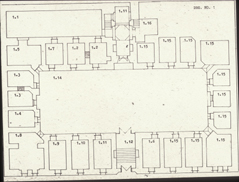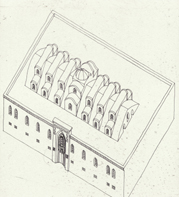AGA KHAN PROGRAM FOR ISLAMIC ARCHITECTURE
Course 4.611/4.613:
8- Caravanserais: The Hostels of the Great Trading Routes: (Click on images to enlarge)
The Islamic heartlands showing the main trade and hajj routes |
Caravanserai or Khan (Turkish Han):
Initially the term designated the travelers' inn on the road. By the fifteenth century it started to replace all the other terms to mean at the same time the urban inn, the guarded storehouse, and the trading installation for wholesale, retail, and export.
An interior view of life in an Ottoman caravanserai |
Major Influences on Trade Architecture in the Islamic World:
- Technological: The Replacement of wheeled transportation by camel caravans after the development of camel’s harness and camel’s double-load.
- Historical: The milieu in which Islam grew was mercantile, and the Prophet himself, along with most of his companions, was a merchant from Mecca.
- Liturgical: Every Muslim is required to perform the Hajj, pilgrimage, at least once in his/her lifetime, if they can. Besides, the development of a science of hadith, prophetic sayings and deeds, necessitated the travel of many scholars in search of authentic traditions. Later, seeking knowledge in famous madrasas, or traveling to learn from a famous shaykh, saw many travelers on the road.
The Requirements:
- Rest houses at one-day intervals for the caravans: The Caravanserai
- Water cisterns and wells for the caravans.
- Road markers and watch towers.
- Bridges over rivers and ravines.
Examples:
The Small Enclosure at Qasr al-Hayr al-Sharqi (ca. 727): Ushers the transformation of the Roman castrum type into a caravanserai.
Qasr al-Hayr al-Sharqi: plan of the small enclosure |
The Ribat at Soussa, Tunisia (completed 821): Blurs the differences between the architecture of the frontiers and that of travel.
Ribat at Soussa; plan |
Ribat at Soussa: Interior courtyard |
Bridges:
Al-Abassi Bridge, Zako, Iraq, Seljuk (11th c.)
Al-Abassi Bridge |
Pahlavi Dej Bridge, Iran, Seljuk (11th c.)
Pahlavi Dej Bridge |
Medieval Watch Towers:
The Minaret of Jam, Afghanistan: Built by Ghiyath al-Din Ghuri (1163-1203)
Minaret of Jam, Afghanistan |
Seljuk Khans in Eastern Anatolia:
Sultan Khan in Aksaray (1229) built by Ala’ al-Din Kaykubad
Aksaray: Caravanserai plan |
Raised mosque in courtyard |
Portal with muqarnas conch |
Sultan Khan in Kayseri (1232-36) built by Ala’ al-Din Kaykubad
Perspectival reconstruction |
Portal with muqarnas conch |
Courtyard with raised mosque |
Seljuk Khans in Iran:
Ribat-i Sharaf (1114-15) on the Nishapur-Merv Road, Iran
Ribat-i Sharaf: plan |
Urban Khans:
Khan Murjan, Baghdad (14th Century)
Khan Murjan: plan |
Khan Murjan: Axonometric drawing |
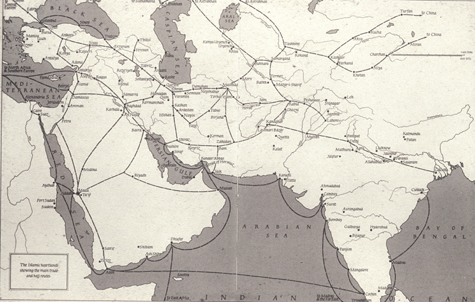
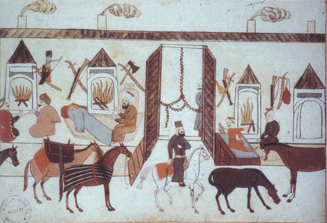
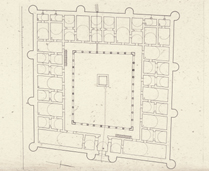
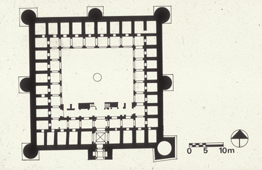
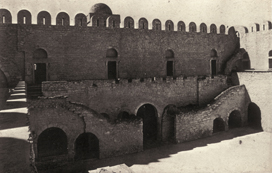
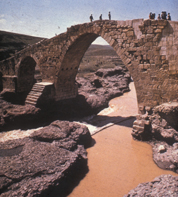
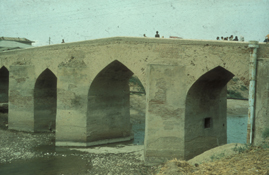
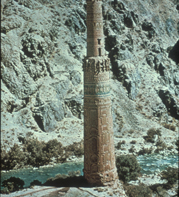
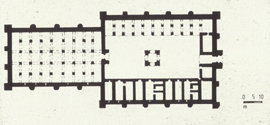
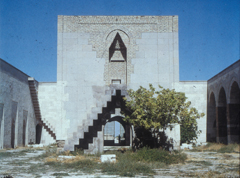
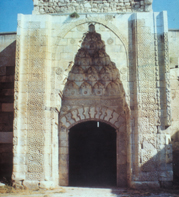
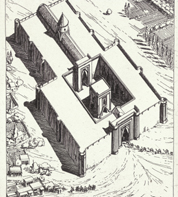
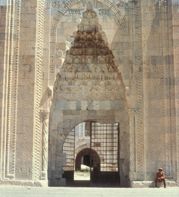
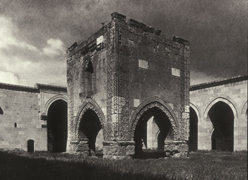
 --Robat -e-Turk, Plan-8.jpg)
